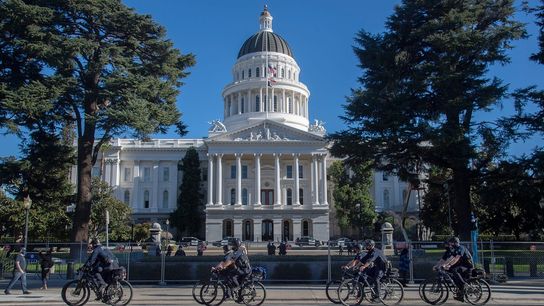The group that changed college sports forever is back at it again.
The California State Assembly is in the process of considering SB-1401, which would go a step beyond the NIL wave that started within the assembly's chambers.
Whereas NIL laws prevent universities from barring their athletes from collecting money, this would require universities to pay them. SB-1401 would require California universities to set up a revenue sharing system within sports that generate more than twice as much money as they spend on athletic scholarships.
For example, UCLA football brought in $41.3 million in operating revenue in 2019. Half of that figure is $20.65 million. If UCLA spent less than $20.65 million on football scholarships (which it did; $20.65 million divided by 85 would be nearly a quarter million bucks per scholarship), then the Bruins would have to share a portion of their football-specific revenue with their players.
On Tuesday, SB-1401 moved to the next step of the legislative process.
Bill would set up this arrangement: If 50% of the revenue generated by a team in a given year is greater than the total amount of money the school spends on scholarships for that team, each player on the team would get an equal share of the difference.
— Steve Berkowitz (@ByBerkowitz) April 27, 2022
Bill's author, Sen. Steven Bradford, said during hearing today that definition of "revenue" is still to be determined. But based on FY21 numbers from schools, bill could provide money to athletes in football, basketball, volleyball and potentially other sports.
— Steve Berkowitz (@ByBerkowitz) April 27, 2022
During hearing today UC and Cal State system reps said they did not have positions on bill, but the expressed concerns. Reps of USC and an association of private schools said they oppose the bill.
— Steve Berkowitz (@ByBerkowitz) April 27, 2022
The actual formula determining how the financials would be calculated and then divided is still a work in progress, according to Sportico.
Sportico also provided this back-of-the-napkin calculation:
The head-count sports that would currently qualify for revenue-sharing under the statute’s provisions are football, men’s basketball and women’s basketball. Based on 2018 financial figures schools provided to the U.S. Department of Education, the legislation would have worked out to FBS football players in California earning, on average, $132,000 per year in addition to the price of their grant-in-aid, while men’s basketball players would receive an extra $107,000 and women’s basketball players would get $15,000 more annually.
Remember, the NIL grass fire that eventually engulfed the entire college sports industry began in California. The bill that eventually became the Fair Pay to Play Act, which aimed to bar California's universities from preventing their athletes from profiting off their status as college athletes (which we now shorthand as NIL), was first introduced on Feb. 4, 2019, with a target date of Jan. 1, 2023. We're still more than seven months from that date, and college sports has already changed irreversibly.
And now even more seismic changes could be on the way.
